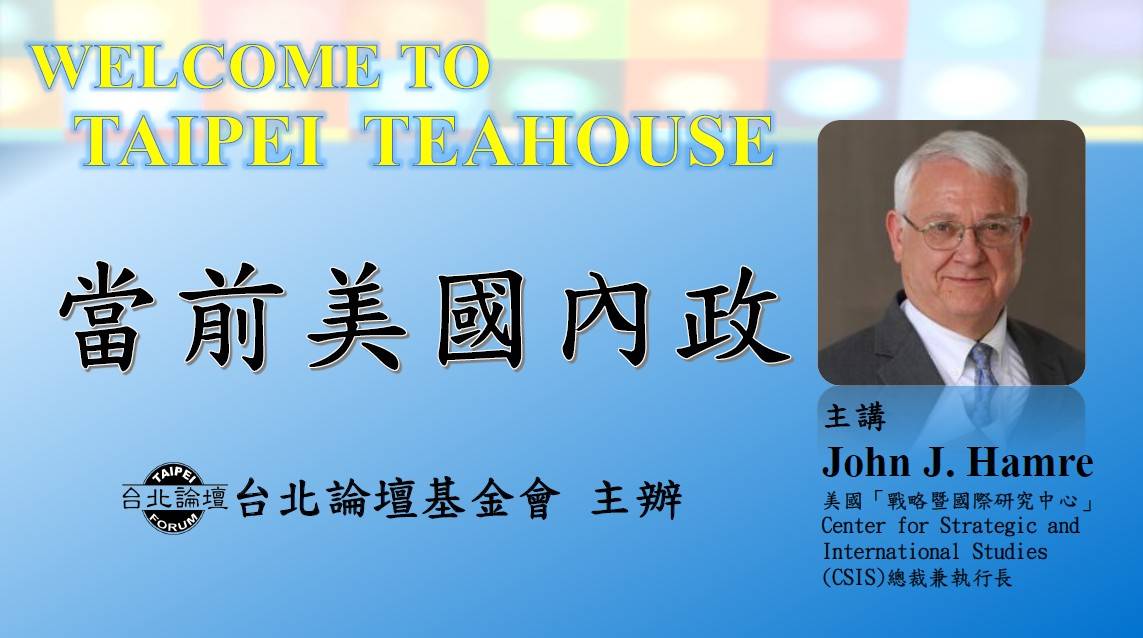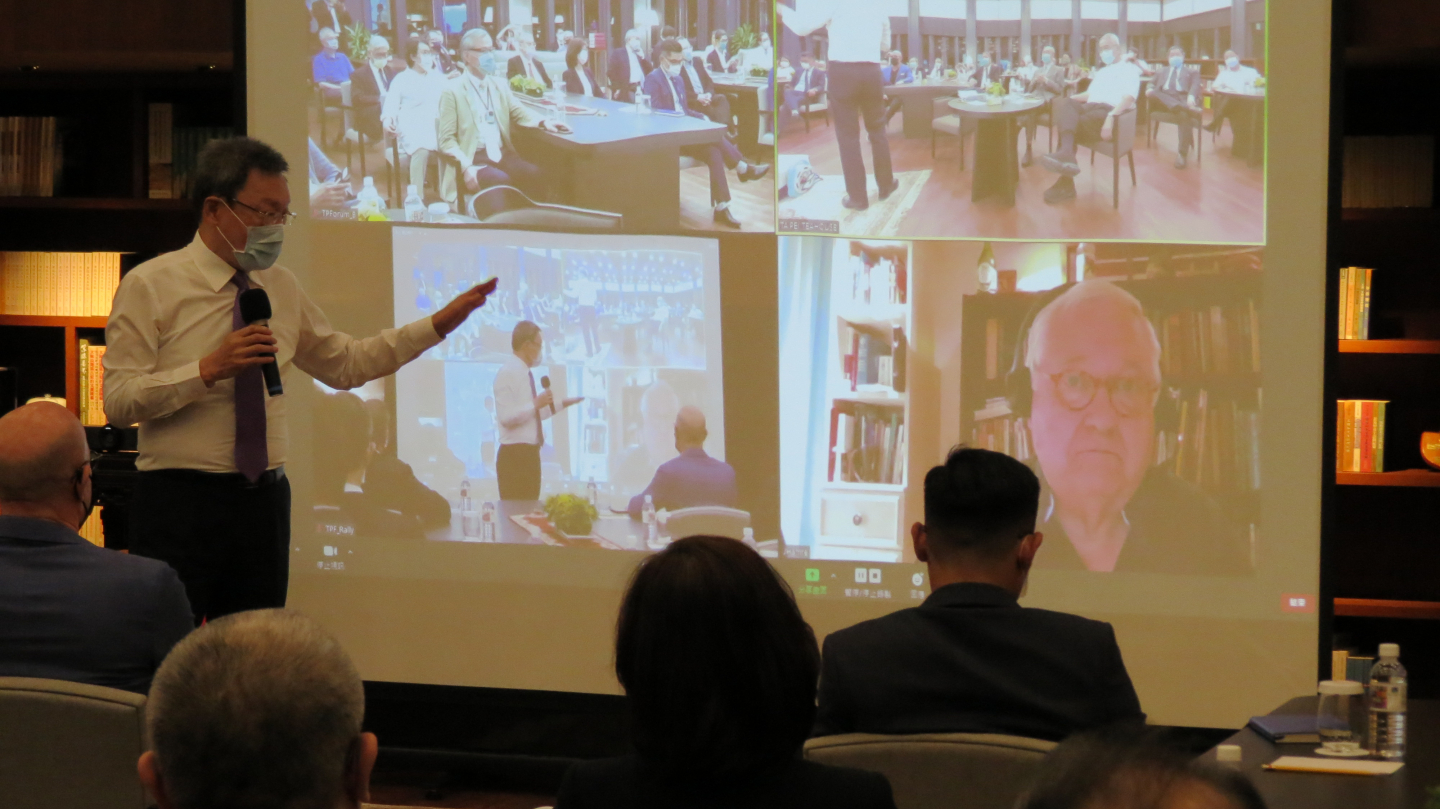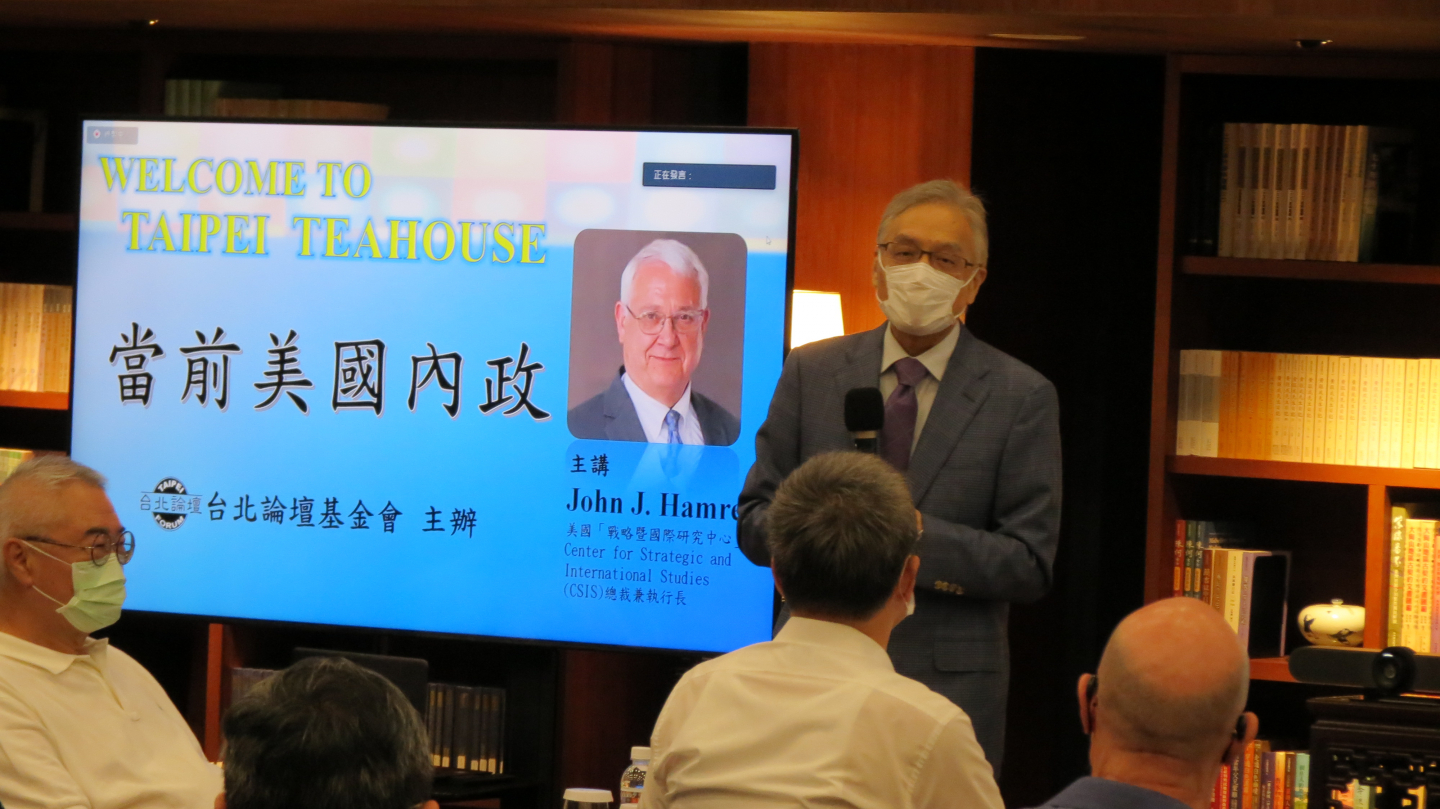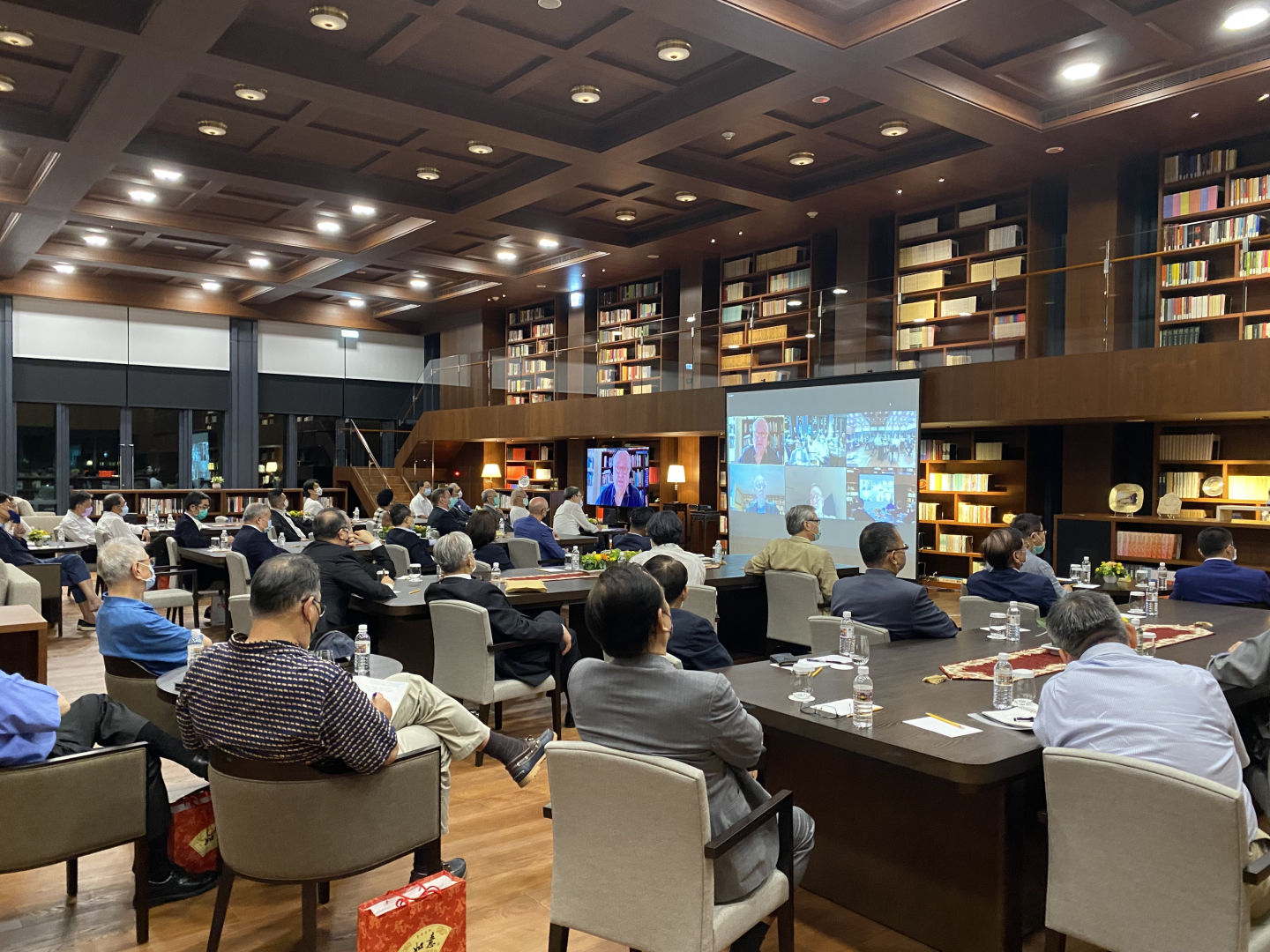Press Release
2021-09-10
Dr. John Hamre, President and CEO of the Center for Strategic and International Studies, gave a video talk on “American Politics” in an event sponsored by the Taipei Forum Foundation, a non-profit organization, on September 8, 2021. The audience filled the reading room of the Chiang Ching-kuo Presidential Library.
Dr. Hamre was Deputy Secretary of Defense in the 1990s and prior to that had worked long years in the U.S. Congress and government. He is now leading one of the most prominent think tanks in Washington, D.C. His knowledge of the U.S. Government and the workings of American politics is deep and comprehensive. The following is the summary of his opening remarks and answers to the questions from the floor.
Three factors shape the American politics of the last three decades. First, China’s decision to open itself to the world brought its 800-million strong labor force to come into direct competition with American labor. It steadily brought down the wage level in the U.S. With wages staying flat for three decades and the capital fast accumulating, tension in American society is bound to grow.
Second, the digitalization of the U.S. economy. The top 10 companies in the U.S. 30 years ago were all manufacturing giants. Now the top 10 are all doing digital things. This transformation contributed to overall economic growth on the one hand. On the other, it widened the differences between those who made money with hand and those with mind.
The third has to do with American politics. Thirty years ago, we had a Presidential/Congressional system. Now it is more like a Parliamentary system. Partisan lines are clearly drawn. The President and his Party take one position and the other Party takes another. The middle ground is disappearing. This is very different from the old days when the Congress enjoyed a high degree of independence from the executive branch.
This brings me to the current situation. According to a study by a scholar in the Brookings Institution, among the 3000 counties, which is the lowest level of government in the U.S., Biden won only 500 counties in the 2020 election, while Trump won 2,500. But Biden’s 500 counties contributed 70 % of GDP to the U.S. economy. My own research shows that the per capita income of the ten most Republican-inclined states in the last election earned only 85 % of the national average, whereas the per capita of the ten most Democratic states averaged about 115 %. The 30 % income differential is caused by the above mentioned factors.
Hence, the internal division in the U.S. today is deep and wide. And it is quite difficult to forge a consensus on ways to move forward. And Biden’s conundrum is that he enjoys such a slim majority in the Congress, one vote in the Senate and 6 in the House, that he has a tough time promoting his agenda as well as moving the nation.
Even though the U.S. politics is in decline, its economic and social foundation remains quite strong. U.S. demography, corporations, R & D, judiciary system, civil society, etc. are still vibrant. What worries me most is neither of the political parties seems to have a vision for the future. No one is talking about AI or overall reform. They seem to be looking forward through a rear view.
People in the middle ground are extremely frustrated. They share a strong desire for the political parties to sort out some consensus. Unfortunately, judging from the behavior of the two parties, that seems nearly impossible. After the next presidential election perhaps. Having said that, at the state and local levels, one could still see a lot of cooperation across the party lines.
But the federal level is simply too rigid, especially the Congress which has changed so much from earlier years. Two things are responsible. One is the money factor. From day one after election, each Senator needs to raise 100,000 USD per month to keep him/her reelected. Imagine the weight of money on his/her role in the Senate. The other is the way the electoral districts are drawn by both parties. As a result, 90-95 percent of the elections are determined at the party primaries, not the general election. There is little or no room for cross-party candidates. Fortunately the civil service in general is still quite good. It may take 20 years for the U.S. to come out of the current conundrum.
On China policy, the two parties are in a rare consensus with their hostile attitude. But it is more rhetorical than action oriented. In Washington, for instance, many hope for stronger anti-China policy. But in New York, most desire a continuation of stable status quo. A lot of quiet consultation by the business and academia is going on without being noticed. Most people do not see China with great hostility. Trump indeed tried to decouple with China. But Biden’s administration is different. It is hostile mostly rhetorically.
What is more troubling now is how the internal forces inside China and the U.S may push up the level of hostility between them. For instance, how can a ruthless and authoritarian government behave internationally in a way contrary to its nature? How can the U.S. which is so divided domestically behave internationally in a united fashion?
The U.S. still enjoys considerable advantages over China. Therefore, it should not say to its allies and friends that “you are either with me or against me.” That is a dead end. On this the U.S. could learn more from former Premier of Japan, Shinto Abe, who did a good job at the Osaka G-20 meeting.
On the civil-military relations, Trump had sought after the November voting to keep himself in the White House with the help of the uniformed military, but he was rebuffed by the military. Generally speaking, the civilian control of the military remains strong and by and large the military is reluctant to allow partisan politics to get into the military realm, although some retired generals and admirals sometimes seem a bit too eager to join politics. That may present a problem. What is more worrisome is the composition of our armed forces. Last year West Point drew 65 % of its new cadets from families of military background. This is too narrow a social base for the U.S. military, contributing to a mood of apathy among the public, an attitude of “It’s their war, not mine.”
Chances of war between the U.S. and China is very low, except for incidents like the EP-3 of 2001. Future competition between the two great powers will likely focus more on trade and finance. Internationalization of renminbi does present a challenge, but it has a long way to go before becoming a reserve currency. A cold peace and competition appear most likely in the near future. Bifurcation of the economic order is also likely to take shape slowly.
Dr. Richard Bush, a renowned East Asia scholar, echoed Dr. Hamre’s pessimism on American politics. He also believed the degradation of political institutions is at the root of the problem. And intense political conflict should have been, but never have been, reconciled. He further mentioned three examples. One is the Capitol riot of January 6, 2021, with its attempt to disrupt the constitutional process of ratification of the election. Two, the Republican-controlled Senate used different ways to handle the nominations of Supreme Court Justices Merrick Garland (2016) and Amy Berrett (2020). Three, Congress tried to weaken the capability of the Internal Revenue Service to collect taxes.
Dr. Su Chi, as the host of the event, urged the audience to pay greater attention to American politics henceforth, because it significantly, though indirectly, affects Taiwan’s future. He laid out his logic: Taiwan’s future is determined less by Taiwan than by China; the Taiwan/China relations are less determined by either than by the US/China relations; the US/China relations depend more on what the US does than what China does; and what the US does depends more on U.S. politics than any rational thinking.




